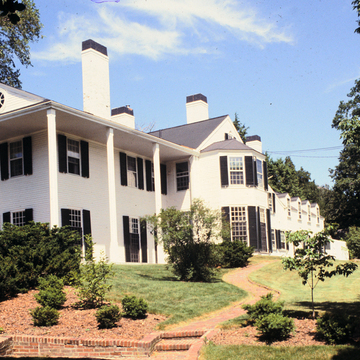Nehemiah Davis may have built the oldest section of this house, the two-story center section with a gable roof, about 1742. Between 1793 and 1803, Senator George Cabot, who made extensive improvements to convert it into his country house, owned the property. A Boston merchant (and secretary of the navy), Senator Cabot added the parlor wing with a surrounding portico in the style of a West Indies plantation house. This was the first of at least four country houses to be built in this style by Boston merchants. Two others, 135 Warren Street and 25 Cottage Street, survive in Brookline; in 1828, John A. Lodge built a similar summer house in Nahant (NH5). In 1921, Henry R. Shepley designed extensive renovations, which included the introduction of woodwork from a demolished eighteenth-century house in
You are here
Old Green Hill
c. 1742; 1796. 215 Warren St.
If SAH Archipedia has been useful to you, please consider supporting it.
SAH Archipedia tells the story of the United States through its buildings, landscapes, and cities. This freely available resource empowers the public with authoritative knowledge that deepens their understanding and appreciation of the built environment. But the Society of Architectural Historians, which created SAH Archipedia with University of Virginia Press, needs your support to maintain the high-caliber research, writing, photography, cartography, editing, design, and programming that make SAH Archipedia a trusted online resource available to all who value the history of place, heritage tourism, and learning.


